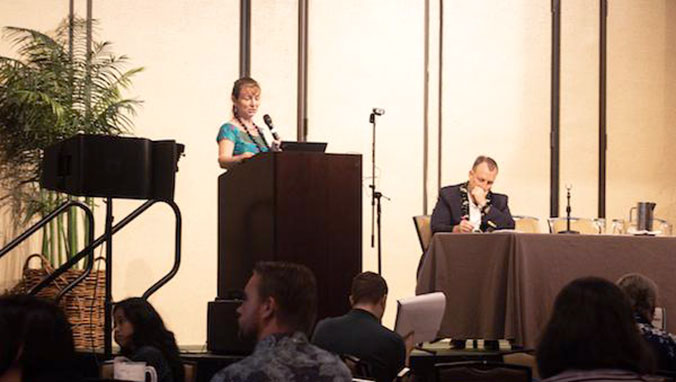
A preliminary analysis of this year’s surveys of licensed physicians in Hawaiʻi shows that the supply of working doctors has decreased by more than a hundred doctors in just one year. Of particular concern is that a big chunk of those doctors have left the state.
The updated 2019 Hawaiʻi Physician Workforce data was presented at this weekend’s Health Workforce Summit hosted annually by the Pacific Basin Area Health Education Center (AHEC) at the John A. Burns School of Medicine’s (JABSOM).
Kelley Withy, AHEC executive director and principal investigator of the workforce report, said the current supply of licensed doctors who are working full-time, according to the preliminary data, is 2,819 physicians statewide. There are 108 fewer practicing physicians than at this same time last year.
Her data show that 49 physicians retired the past years—perhaps not surprising given that well over a quarter of Hawaiʻi doctors are past the age of 60. Another 58 physicians reduced their work hours, entering into semi-retirement. But the number that got a lot of attention was the one showing at least 39 doctors had left the state.
“The stressors physicians are facing have increased dramatically over the past 20 years,” said JABSOM Dean Jerris Hedges. “There is no doubt that the environment for practicing medicine has changed and the pace of that change is happening more quickly.”
Withy said at her summits, which draw upward of 500 physicians from all over the state annually, doctors repeatedly mention that raising reimbursements from Medicare, Quest and private insurers would help the most.
The 2019 Hawaiʻi Health Workforce Report will be finalized between now and December, when it will be submitted to the state Legislature. Through the state, a fee is attached to the issuance of doctor’s licenses in Hawaiʻi to support the annual survey and efforts by JABSOM to support working physicians’ well being.
The Legislature adopted the annual survey out of its concern over already critical physician shortages in some parts of the state, coupled with projections that the state’s aging population will need more, not fewer, medical services in the future.
See the full story on the JABSOM website.
—By Tina Shelton


